Buying a property at an auction can be a great way to pick up a bargain. What’s more, they can also be a great way to buy a property quickly.
However, there are a number of common problems with auction properties that you need to look out for.
Auctions are often used to sell properties that have something wrong with them. It may just be very dated decor, or it could be that the property requires a complete rebuild. Either way, it pays to have your wits about you.
We’ve viewed a lot of auction properties in our time. Here are some of the most common issues you’ll find with them.
Note that these issues are not unique to auction properties and are actually good things to look out for when buying any property!
1) Cracked Walls
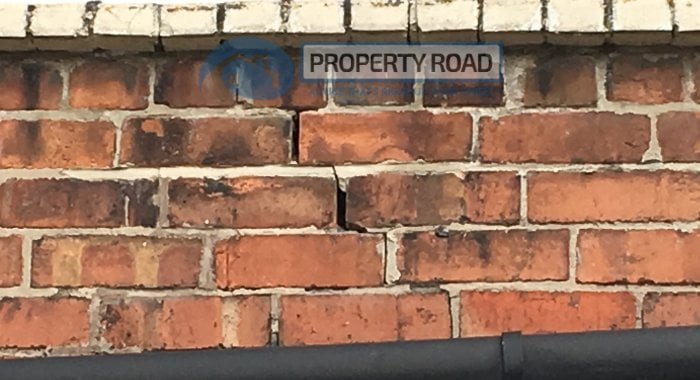
A crack in a wall is enough to put even the keenest prospective buyers off. However, in many cases, it’s much less of an issue than you might think.
If the crack is internal and runs it straight lines, it’s probably just the joins of the plasterboard showing through and can simply be made good when you decorate.
If a crack is more than just a hairline crack, you’ll want to start paying closer attention. It may just be settlement, which is common and usually nothing to worry about.
However, if the crack is wider, or appears wider at the bottom than the top, then you’ll want to get a structural engineer in to check it out as it could be subsidence.

Subsidence is where the building has actually moved. Long-standing non-progressive movement is usually not a problem. Progressive movement will need rectifying before major issues with the property develop.
The British Geological Survey (2021) states that close to 6.5% of properties in Great Britain will be affected by shrink-swell subsidence. This number is projected to grow to 10.9% by 2070.
Subsidence is often feared, and it’s true it can be an expensive problem to solve. However, it may not be as bad as it looks so it’s always worth getting the experts in to give you an estimate and taking that into account when deciding what your maximum bid at the auction will be.
As most of the auction properties we view are in ex-mining areas, cracks are one of the most common issues we come across.

Most of the time we find the cracks are just cosmetic, where two different materials are joined together. The different expansion and contraction rates of the materials at different temperatures will often cause these kind of cracks to appear.
However, if we can get our fingers in the crack then it immediately sets off alarm bells. Anything we are not sure on, we’ll always get a structural engineer to check if we are serious about buying the property.
Ultimately, if the investment seems to risky because of cracks, we’ll walk away and find a less risky investment.
2) Damp

Often, properties that come up at auction have been neglected and may have stood empty for several years. That means when you go in you may smell or see damp on the walls.
In this situation, your first job is to try and trace where the damp is coming from. Go outside and look at the exterior of the wall where you found the damp.
Is the guttering broken or blocked, causing water to soak through the wall? Are there any roof tiles that will be letting water seep down through the property?
Often, the issue will be fairly obvious and once you have fixed the issue and repaired the damage, the damp problem will be solved.
It’s not usually very expensive to fix lateral or penetrating damp problems such as these.
These are by far the most common auction property issues we have experienced. Data published by Statista reveal that 4.1% of England’s housing stock had damp problems in 2022.
We’ve seen damp caused by everything from leaky guttering through to cracked render and raised external floor levels. In each case, it has simply been a case of us figuring out the problem and how to rectify it.
In some cases, such as the property we own now, the damp or mould patches can simply be caused by the room being too cold and condensation forming on the walls. Again, this is easily fixed once the heating goes on!

However, if you cannot locate the source of the damp, you’ll need to get an expert in to assess the issue. It may be rising damp or it could simply be a ventilation issue.
The expert will recommend the action you need to take, which may include a damp proofing course. This is a little more costly to fix but it’s still not the end of the world!
Just keep in mind that damp that has been left untreated for any length of time can lead to further issues. We’ve seen issues such as rotting joists and floor boards caused by damp. There’s also potentially serious dry rot to worry about too.

We’ve always found it pays to check any timber surrounding the damp issue for signs of rot. This might involve lifting carpets and floor boards but it’s the only way you can be sure the water damage hasn’t caused a bigger issue than you can see.
3) Rotting Joists
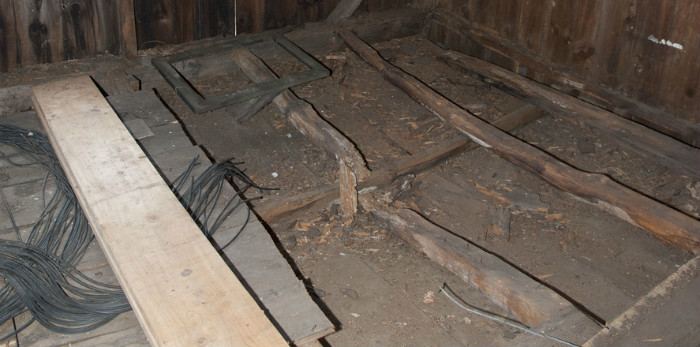
If, while walking around the property, you notice some of the floorboards feel ‘spongy’, you’ll want to take a closer look at the floor joists. The floor joists are the thick supporting beams that the floorboards are laid upon.
Where inadequate ventilation has been provided underneath the floor, the joists can begin rotting, usually at the ends which adjoin the walls.
Once the rot sets in, the joists start to move, causing the ‘spongy’ feel to the floor. If left untreated, the floor will eventually fail completely.
We considered buying a property with ‘spongy’ floors once. Not because we didn’t think it was an issue but simply because we were willing to pay for the work to fix it.
Ultimately we didn’t go for it in the end due to some other structural issues but it’s always worth remembering that all issues can be resolved if you have the money to do it.
If you’re concerned about rotting joists, like with damp, the first thing you should do is check the building exterior.
Does the property have airbricks (bricks with holes in) about 6 inches from the floor? Are any of these airbricks blocked? Airbricks that are blocked, or too close to the floor could be letting water in or preventing proper air circulation. This then creates the perfect conditions for rot to set in.
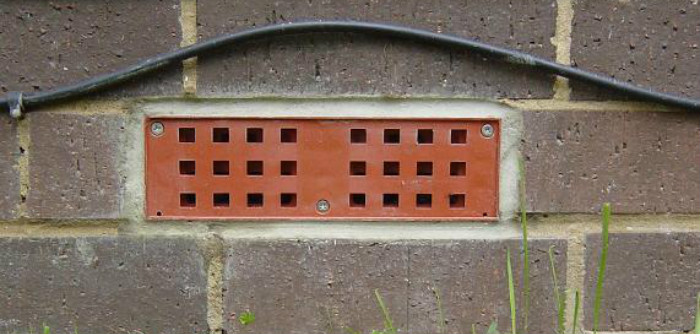
There are two main types of rot that can affect joists – wet rot and dry rot.
Wet rot is usually caused by water seeping through and can easily be rectified by fixing the source of the problem.
Dry rot is a much more complicated affair as it’s actually a fungus and can travel through a property by releasing spores. Douglas & Singh (1995) highlight how the fungus Serpula lacrymans relies on five basic factors for growth. The study also lays out an inspection methodology you can use to assess your property.
If you’re not absolutely certain which type of rot you have, get an expert in. You may need to replace your joists and some chemical treatment may be necessary to prevent re-occurrences.
4) Damaged Roofs

If you stand back from the property and look up to the roof you may notice some problems. A few missing tiles are nothing to worry about as, although they’ll need fixing as soon as possible, the cost of doing so should be minimal.
However, alarm bells should ring if, looking along the very top of the roof, the ridge does not run in a true line. A sagging or curving roof could indicate a problem with the structure of the roof.
If you can gain access to the roof space, go up and have a look – it might be more obvious from the inside. If any of the supporting beams appear the be bowing or twisting then they will need replacing. You may also need to have the roof re-tiled.
This can obviously be an expensive business so it’s worth getting a specialist out to give you a quote for the work before you go to the auction.
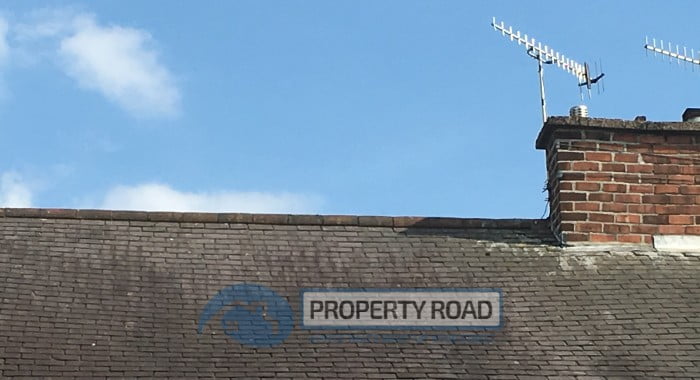
We’ve found that roofs often need attention with auction properties, especially if they have been left unoccupied for any length of time.
The science also backs this theory up. According to Douglas & Ransom’s 2013 book, Understanding Building Failures, when minor defects at their earliest stages are not found and corrected, premature roof failures may be imminent.
However, occasionally, we have encountered auction properties where the roof is actually in pretty good condition. Typically this happens when another investor has already begun work before decided to abandon the project and sell it again.
Since most investors will always make sure a building is watertight before starting any internal works, it’s common that part-renovated properties will usually have pretty good roofs.
However, if a property has only been renovated partially, it always pays to try and find out why. Sometimes there is a genuine reason but it can also indicate the investor found bigger issues than they expected once they started peeling back the layers of the building!
5) Old Windows

Auction properties often have old windows that need replacing. It will be pretty obvious that’s the case if the windows are single-glazed, but don’t assume that just because it’s double-glazed that everything is fine.
Double-glazing commonly lasts for around 20-30 years before it begins to fail. Signs of failure include mist or condensation appearing between the two panes of glass, being able to feel draughts coming through a closed window, and broken handles or locks.

Old windows may be costing you more in energy costs. In fact, a joint report by the Glass and Glazing Federation (GGF) and British Glass (2023) revealed that 80 million windows need to be replaced to comply with industry standards. If homeowners updated them, they could achieve 22% more heat savings, provided their home is already insulated properly.
If the property you are looking to buy has aging windows, you may want to factor in the costs of replacing them. Not only will it make the property more attractive to prospective buyers, it will also make the building more energy efficient.
We’ve had to replace lots of windows in our time and it does make a big difference on the look and feel of the property. In some cases, we’ve even opted for triple glazing to add a more premium feel, reduce noise levels, increase security levels, and provide extra energy efficiency.
Just be sure that if you replace a window, you’ll need to get a FENSA or CERTASS certificate for the window. This proves it passes building regulations and will be essential when you come to sell the property.
6) Limited Leasehold Remaining

Leaseholds are common on some types of properties, particularly flats. For 2020-2021, leaseholds made up 20% of the English housing stock. That is approximately 4.98 million properties in England, according to a 2023 Department for Levelling Up, Housing & Communities report.
A leasehold is essentially where the person who owns the property, does not own the land upon which it sits.
An annual rent is therefore due to the landowner. The landowner may also need to be consulted before certain improvements can be made to a property.
If you are considering buying a property that has a leasehold, the first job is to get hold of a copy of the leasehold agreement. This will tell you how much the annual rent is and what other conditions may apply.
The key thing you need to check though is how much time is left on the agreement. Anything less than 80 years remaining and you need to start doing some more research.
That’s because mortgage companies are reluctant to mortgage properties with less than 80 years left on the leasehold. That’s because it may make the property difficult to sell on (who wants the risk that the lease won’t be renewed and they’ll lose the house?).
If the lease is short, you’ll want to make inquiries about either extending the lease (usually the best method for flats or apartments) or purchasing the freehold from the landowner (often best for houses and bungalows).
Either way, be prepared for some additional costs after you have purchased the property!
7) Outdated Plumbing/Electrics
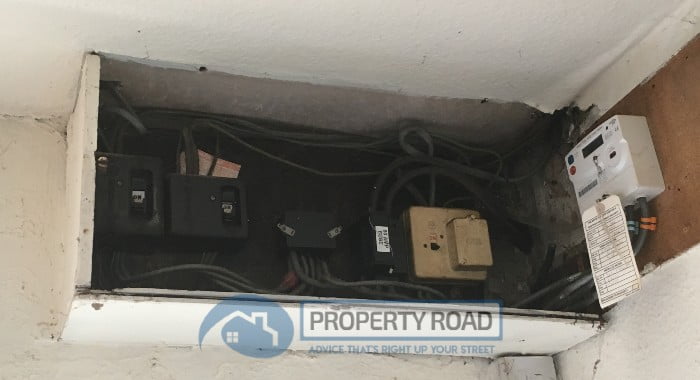
Auction properties tend to be properties that haven’t had much money spent on them for some time. That means things like the plumbing and electrics are likely to be out of date.
With plumbing, it’s not unusual to find properties without any central heating, or with old boilers that are due to be replaced.
For electrics, wiring that’s not up to current standards, old sockets and switches, and old-style consumer units (also known as fuse boards) are all common in auction properties.

In fact, we’ve found that pretty much all auction properties we have viewed have had outdated electrics. Naturally, some have been worse than others but if a rewire is required, it can easily cost several thousand pounds.
All of this can easily be fixed, but you’ll need to get the experts in. Any work involving gas has to be done by a Gas Safe engineer. Most electrical work will need to be carried out by a qualified electrician and a Part P Certificate issued for the work.

Anytime you have to hire qualified tradesmen rather than carry out the work yourself will obviously push up your costs.
We can’t stress how important this is! A 2023 report from the Home Office revealed that faulty wiring was responsible for 3,486 primary fires between 2022 and 2023.
Common Problems With Auction Properties – Conclusion
As you can see, there are a number of common problems with auction properties that you need to look out for. In fact, these are not just problems with auction properties.
They can affect any type of property and so are always worth looking out for, they just tend to occur more with properties up for auction.
That has certainly been our experience. We’ve seen many more problems in the auction properties we have viewed than the properties we have viewed when looking for our own home.
Most of the problems can only be spotted if you actually view the property from the inside. That’s why it’s never a good idea to buy a property without first conducting a thorough viewing.
Even with investment properties, it’s always worth considering a survey or at least taking a qualified professional along with you to a viewing.
In each case, whilst the issues may be severe, and the costs of rectifying running into the thousands, problems with properties are rarely unsolvable. It’s key you identify the issues and get the advice, and an estimate, from an expert before you bid on a property.
This way you can factor the additional costs into your maximum offer price and ensure you avoid any nasty surprises. If in doubt, get a chartered surveyor’s report on the building ahead of the auction. It will cost you a few hundred pounds but it could save you thousands!
We’ve walked away from more auction properties because of issues than ones we have bought. While you’ll always have issues to deal with (that’s often why they’re up for auction – because mortgage providers won’t touch them), it’s about working out which ones are still good investments despite the cost of the works.
If you’re not buying at auction, make sure you read our guide on how to negotiate a lower price on a property to get a reduction in price for any issues you find.




